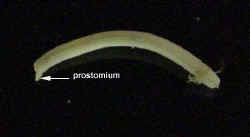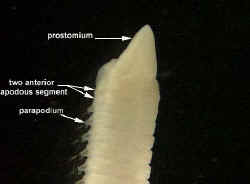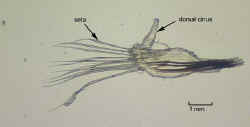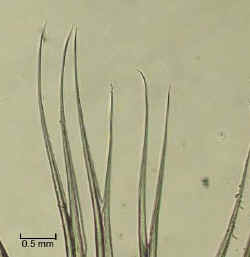|

 
 General Feature
General Feature
Most Lumbrineridae are free living, burrowing forms. They
burrow in sand, mud, between algal hold-fasts and plant-roots. They occur
on sandy and muddy bottoms in shallow depths. Some species, however,
appear in large numbers in deep-water areas.
  Whole segment Whole segment
|
|
|
|
Prostomium and parapodia

|
 |
|
|
|
|
 Prostomium
Prostomium
Prostomium is rounded to conical. No palps, no eyes and no
antennae found.
Head appendages and tentacular cirri are also absent.
Lumbrineridae have well-developed mandible and
maxillae.
 
Prostomium |
|
|
|
 Parapodia and Setae
Parapodia and Setae
Parapodia are uniramous. Some species have dorsal cirri.
Setae include winged capillaries
and simple or compound hooded hooks.
  Parapodia uniramous Parapodia uniramous
 Capillary
setae Capillary
setae
|
|
